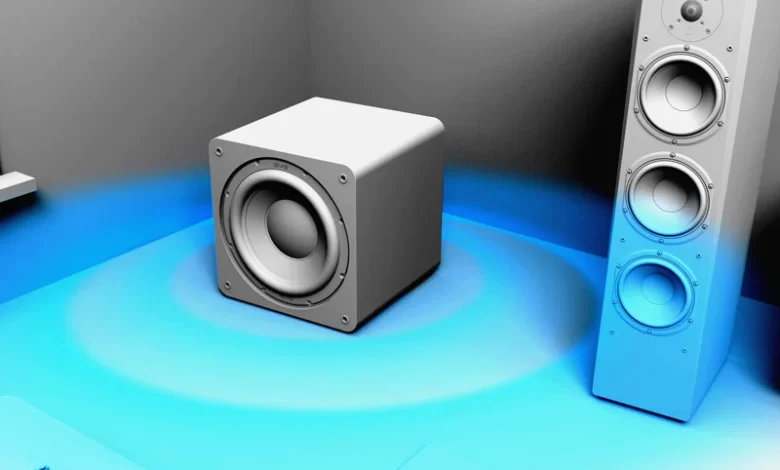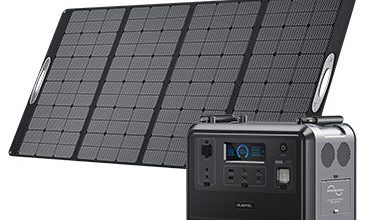Understanding the Ideal dB Level for a Good Subwoofer Experience

Investing in a good 8 inch car subwoofer can dramatically enhance the audio experience in your home theater. However, understanding and calibrating it properly, especially in terms of dB level, can be a challenging task for many.
This article aims to guide you through unraveling the concept of decibel (dB) levels in subwoofers and how to create an optimal listening experience with the right dB settings.
What is dB level in subwoofers and why it matters?
The dB level in subwoofers refers to the measurement of sound pressure level or volume that the subwoofer can generate, measured in decibels (dB). The term originates from the logarithmic unit that denotes the ratio of a physical quantity to a specified or implied reference level.
In subwoofers, the dB level acts as an essential determining factor of the overall auditory experience, dictating the loudness of the sound produced. A higher dB level correlates to a higher volume of sound output. However, it’s not solely about loudness – the dB level also directly impacts the clarity and crispness of the sound.
It’s important to strike a balance, as an excessively high dB level could lead to distortion and potential damage to the speaker, whereas a too low dB level could muffle the audio and make it inaudibly soft. Thus, a suitable dB level is crucial for achieving a powerful yet clean output from your subwoofer, enhancing your listening experience.
Defining dB: Understanding its Role in Subwoofers
The dB or decibel level is a unit of measure for sound intensity. In the case of subwoofers, specifically, the dB level usually corresponds to the volume of the bass. The higher the dB, the louder and harder the bass ‘hits’.
Why is the dB Level Significant in Subwoofers?
Recognizing the dB level in subwoofers is essential as it could dramatically affect your sound system’s audio quality and experience. A well-calibrated subwoofer dB level will make the low bass hit just right without overpowering the stereo, providing a harmonious blend of sound throughout your home theater.
Common Misconceptions About dB Levels in Subwoofers
Many people think the bigger the subwoofer, the louder it will be. While size can contribute to the overall output, crafting the perfect sound involves the right balance of dB levels, subwoofer frequency, and careful calibration with the main speakers.
Finding the Ideal dB Level for Your Sub
Determining the ideal decibel (dB) level for your subwoofer is a crucial facet of audio equipment setup that significantly influences your entire sound experience. Every individual has a unique sound preference, hence your perfect dB level could differ from someone else’s.
The dB level of your subwoofer directly correlates with its output sound volume; thus, a higher dB rating implies a louder sound. A commonly recommended dB level for home audio systems falls within the range of 60 to 75 dB for a comfortable and immersive listening experience.
However, the ideal dB level ultimately depends on the room’s acoustics, the type of music or sound being played, and personal listening preferences. To find your optimal dB level, ensure that every component of your sound system is properly configured.
Experiment with various dB levels and observe how it affects your overall sound quality. Remember, the goal is to achieve a balanced and robust sound that enhances your audio experience without causing any discomfort or auditory damage.
How High dB Levels Impact the Quality of Bass
A higher dB level doesn’t always mean better. Excessive dB levels can result in a harsh, distorted sound rather than the clean, precise low frequency that a properly set subwoofer can provide. Achieving an optimal dB level is key to experiencing the full potential of your sub.
Best Practices in Adjusting Subwoofer dB Levels
Initial level setting is crucial. Start by setting the subwoofer level to around 75 dB, a good starting point. Then, listen and adjust accordingly. If possible, use a dedicated subwoofer calibration tool or function included in your sound system—like the Denon audio system, for example.
Typical dB Levels for Different Types of Subwoofers
A typical home theater subwoofer might hit around 115 dB peak volume during an intense movie scene. Smaller subwoofers may be quieter, but with proper calibration, they can still provide an enriching bass experience.
How to Calibrate Your Subwoofer for Optimal dB Levels
Calibrating subs for optimal dB (decibel) levels is crucial for achieving the best sound quality that is neither too loud nor too quiet. Begin by connecting your subwoofer to the audio source, ensuring all wires and cables are correctly fixed.
The next step is to adjust the phase controls and the subwoofer’s volume to a moderate setting. Then, use a Sound Pressure Level (SPL) meter or professional audio calibration software to measure the decibel level.
Choose a steady and consistent sound – typically, you would want to aim for around 75 dB for a living room setting. If the audio is too faint or too powerful, adjust the subwoofer’s volume accordingly. You may have to perform several adjustments before finding the perfect balance.
It is also advisable to revisit these settings periodically as they may require fine-tuning due to changes in the room acoustics. By following these steps, you can precisely calibrate your subwoofer to provide an optimal listening experience.
Why Subwoofer Calibration is Crucial
Calibration ensures that your sub’s dB level matches the main speakers, creating a synchronous sound level across your audio system. It determines how the subwoofer and the main speakers interact, contributing to superior bass management and an overall better sound experience.
Easy Steps to Calibrate Your Subwoofer’s dB Level
Start by turning on the subwoofer, set it to the mono mode, and adjust the level control until the sub’s level reads around 75 dB. Now, adjust your main speakers’ volume level until they also read 75 dB. This way, the sound from your main speaker and the subwoofer will be level matched.
Troubleshooting Common Calibration Issues
If the sound seems off, check that your speakers and subwoofers are correctly configured. Ensure all low-bass sounds are being correctly redirected to the subwoofer. Additionally, adjusting crossover between the main speaker and subwoofer can solve many sound imbalance issues.
How the Main Speakers Interact with Your Subwoofer’s dB Level
The interaction between your main speakers and your subwoofer at the dB (decibel) level is vital to achieving the optimal sound performance in your audio system. The subwoofer’s dB level essentially determines the volume of the low-frequency sounds it produces, while the main speakers are more responsible for mid and high-frequency sounds.
An appropriate balance between the two is crucial for creating a harmonious audio environment. If the subwoofer’s dB level is set too high in comparison to the main speakers, the bass will overpower the overall sound, muddying the nuances of the mid and high frequencies.
Conversely, if it’s set too low, the audio may lack depth and richness. Hence, calibration of both the main speakers and the subwoofer is necessary. This often involves adjusting the volume, or dB level, of both components, to complement each other.
Moreover, the specific characteristics and capacities of your speakers and subwoofer, such as their power handling ability and frequency range, can also affect how they interact at the dB level.
Understanding the Crossover Between Main Speaker and Subwoofer
Crossover is the point where your subwoofer and main speaker’s bass extension intersect. On a standard stereo, this point is usually around 80 Hz—it’s a good idea to set your sub’s LPF (low-pass filter) around this frequency.
When Subwoofer dB Level Overpowers the Main Speakers
If the subwoofer dB level is too high, it may dominate the main speakers creating an overwhelming bass that can spoil the overall sound quality. This imbalance can often make dialogue in movies hard to hear, overshadowing the sound from the main speakers.
Achieving a Balanced Audio System: Main Speakers and Subwoofer
To achieve a balanced audio system, the dB levels of your main speakers and subwoofer must match. Make sure the subwoofer is not too loud or too quiet compared to the main speakers. The goal is to create a seamless blend of sound.
Understanding Other Factors that Affect Subwoofer dB Levels
Understanding other factors that can modify Subwoofer dB levels is crucial for optimizing sound quality. Apart from the subwoofer’s power rating, parameters such as the subwoofer’s placement, room acoustics, and enclosure type play a significant role in altering dB levels.
For example, placing the best competition subs near a wall or in a corner can boost the dB output due to sound reinforcement from the wall. Similarly, room acoustics, including room size, furnishings, and materials used in the room, can change the dB readings dramatically.
An empty room can make the subwoofer sound louder, while a lot of furnishings can dampen the sound. Moreover, the subwoofer’s enclosure type – sealed or ported, can dramatically influence the overall dB level.
Sealed boxes provide tight and accurate bass while ported or vented enclosures increase the bass response and are louder. Understanding and manipulating these factors will result in achieving the desired subwoofer dB levels and overall sound performance.
How Room Acoustics Impact Subwoofer dB Level
The acoustics of your room can significantly influence the performance of your subwoofer. For instance, placing your sub in a corner can amplify the sound, causing a rise in the dB SPL (sound pressure level) without having to increase the subwoofer’s output.
Subwoofer Placement: Can It Change dB level?
Yes. Moving your powered subwoofer around your room can impact its dB level. Changing the location can help you find the right spot where the subwoofer operates at its optimal dB level.
The Role of Subwoofer Frequency in Achieving Optimal dB Levels
Along with dB level, frequency also plays a prominent part in how your subwoofer performs. A clear understanding of the interaction between dB level and frequency can help you better configure your woofer for a superior bass experience.





